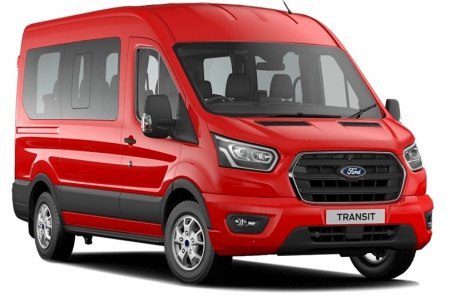
Test Lattices: Renault Captur Energy dCi 90 Helly Hansen
Well, at the time, leisurewear was not talked about like that, and a few decades later, when Renault was born, crossovers were not yet known. We now know both, and Renault took advantage of the HH connection to bring something more "leisurely" to market. Capturja.
At first glance, the essence of cooperation is appearance, but in fact it is not quite so. New to this Captur is the Extended Grip system. This means that Renault engineers have played around with the electronics that keep the car stable and prevent the drive wheels from idling, and have added a system between the seats with which the driver can partially control the system.
Why partially? Because choosing EXP (experienced driver) or choosing a setting for the ground with less grip only works at speeds up to 40 kilometers per hour. The ESP then switches back to its very limited operating mode, and that's it.
Since such a Captur is neither a racing car nor an SUV, this is certainly not surprising (we don't blame him either), but still: on muddy gravel or snow, it may happen that you have to do a few runs before driving. up a steep slope, and then speeds in excess of 40 kilometers per hour. The limit could be set slightly higher.
That the system works well was also quickly shown by the Kumh Captur tires, which are not really suitable for home use or on tarmac. The limits are set surprisingly low, so the system has a lot of work to do if you start driving like on the Clio GT. The Captur, for obvious reasons, also tilts quite a lot, but on the other hand, despite the 17-inch tires with relatively low hips, the chassis still absorbs bumps well enough.
We already know the engine, the 90bhp dCi is powerful enough for the Captur, it would be even better if the gearbox had six rather than five gears. Then, under certain conditions, consumption will be lower. Make no mistake: this Captur is not too greedy, quite the opposite: 4,9 liters on a normal lap and consumption per good liter in tests are favorable numbers, especially since the Captur is not a very small car. It has enough space for family use, both in the back seat and in the trunk - of course, if you do not expect the spaciousness of a five-meter minivan.
In addition to the Extended Grip system, the HH label also stands for automatic air conditioning, bright red (you can wish for that on the other three), 17-inch lacquered wheels, park assist and R-Link. The latter caused some problems, as the Android operating system running on it liked to freeze, and it had to be completely rebooted twice. But this is (obviously) to be expected from Android (including considering the experience of other devices).
The seats are upholstered in a combination of leather and special fabrics, some interior details match the exterior color, and overall this Captur gives the impression that it is worth the $ 19k that (according to the price list) they require. for this.
Text: Dusan Lukic
Renault Captur Energy dCi 90 Helli Hansen
Basic data
| Sales: | Renault Nissan Slovenia Ltd. |
|---|---|
| Base model price: | 17.790 € |
| Test model cost: | 19.040 € |
| Calculate the cost of auto insurance | |
| Acceleration (0-100 km / h): | 13,7 with |
| Maximum speed: | 171 km / h |
| Mixed flow ECE: | 3,6l / 100km |
Technical information
| engine: | 4-cylinder - 4-stroke - in-line - turbodiesel - displacement 1.461 cm3 - maximum power 66 kW (90 hp) at 4.000 rpm - maximum torque 220 Nm at 1.750 rpm. |
|---|---|
| Energy transfer: | front wheel drive engine - 5-speed manual transmission - tires 205/55 R 17 V (Goodyear Eagle UltraGrip). |
| Capacity: | 171 km/h top speed - 0-100 km/h acceleration in 13,1 s - fuel consumption (ECE) 4,2/3,4/3,6 l/100 km, CO2 emissions 96 g/km. |
| Mass: | empty vehicle 1.170 kg - permissible gross weight 1.729 kg. |
| External dimensions: | length 4.122 mm – width 1.778 mm – height 1.566 mm – wheelbase 2.606 mm – trunk 377–1.235 45 l – fuel tank XNUMX l. |
Our measurements
| T = 19 ° C / p = 1.029 mbar / rel. vl. = 72% / odometer status: 8.894 km | |
| Acceleration 0-100km: | 13,7s |
|---|---|
| 402m from the city: | 18,7 years ( 118 km / h) |
| Flexibility 50-90km / h: | 12,4s (IV.) |
| Flexibility 80-120km / h: | 21,7s (V.) |
| Maximum speed: | 171km / h (V.) |
| test consumption: | 5,9 l / 100km |
| Fuel consumption according to the standard scheme: | 4,9 l / 100km |
| Braking distance at 100 km / h: | 37,6m |
| AM table: | 40m |
evaluation
The collaboration between the two brands has resulted in a vehicle that is visually (very) pleasing, technically and structurally good, and spacious enough in space. It's a shame Renault has decided to launch a third unreliable brand (Android).
We praise and reproach
form
Barva
Equipment
consumption
Android running R-Link
only five-speed gearbox
Extended Grip speed limit set too low

